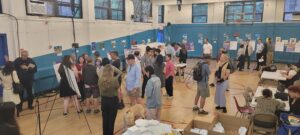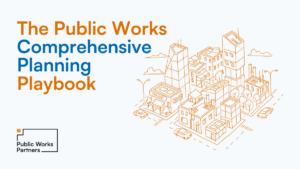Fundamentally restructuring police systems nationwide to be more emblematic of community policing models is easier said than done. Nationwide integration of community policing practices has to overcome meandering political will, a lack of standardization and accountability, and a dearth of substantive measurement and evaluation strategies. In such a large decentralized system of policing, it makes sense that these challenges are present in police departments across the country. And it’s certainly easier to write about the barriers to implementation than it is to actually remove said barriers. But that doesn’t mean we shouldn’t try.
Within our political landscape and with the funding relationships that exist between federal agencies and police departments, issues of political will during and across political administrations will persist without grand efforts of civic engagement to advocate for real community policing initiatives. But despite these limitations, there are still things we can do to improve what we have and create programs that focus on community engagement. Through the creation of well thought out implementation plans and methods of measuring outcomes, we can hope to tap into and better understand the true potential of community policing policies.
In implementing programming that both depends on community engagement and has a profound effect on community members, it is integral to develop community engagement plans as part of the implementation process. This doesn’t just mean conducting community engagement as part of programming but doing so at the birth of a program to understand what a community wants from a program and how they want it delivered. This is an important element to ensure that community policing programs both abide by accepted frameworks for community policing while meeting the unique needs and problems of the communities they operate in. Doing so requires creating community engagement plans. When police departments develop community engagement plans, they should be asking who makes up a community, how the program will ensure equity, and what the most effective ways to engage the community in this process are. When Public Works engages with clients on creating community engagement plans, we lean on our toolkits to help answer these questions. Addressing these questions upfront is important to understand the types of people community engagement will reach and the best ways to reach them to ensure equity and access to participation in designing and implementing community policing models.
Using community feedback in implementation plans will identify the right ways for police departments to interact with their communities in a collaborative problem solving capacity. It is an opportunity to identify methods of effective program delivery that may not have been thought of without community engagement. It is an opportunity to entertain unconventional models such as those that utilize civilian staff. For example, extensive feedback from caregivers within a community could lead to a discovery that having dads monitoring school halls instead of school safety officers is a more desired means of conflict mediation. Extensive feedback from mental health specialists could lead to the idea of using community leaders and peer specialists in intervention and outreach to more effectively increase communication and trust with law enforcement. If the planning process stays within the confines of police departments, these ideas likely won’t be shared and acted upon.
Just as important to implementing program plans is tracking their success and outcomes. Key to this process is identifying desired outcomes from program interventions and good indicators to measure the extent to which desired outcomes are achieved. Good indicators should be well related to the outcome, well related to the impacted community, and easily measurable, repeatable, and available. Traditional measures of police performance, like volume of tickets and arrests, are not good indicators of successful community policing outcomes. They don’t properly indicate common desired outcomes related to community policing models like improved civic engagement, public trust in the police, or quality of life improvements. Furthermore, reliance on these indicators can shift the attention and behavior of police departments and individual officers away from community policing activities like non-enforcement contacts toward traditional police activities like traffic stops and random searches. Moving away from these measures may not only improve community policing programs but encourage shifts in philosophies of police departments and officers. Instead, police departments should focus on developing measures with community input. Moving towards measures that are dependent on community input means departments will be better equipped to assess positive outcomes of police contacts experienced by their communities, such as quality of life improvements. This can be measured using a range of indicators, from access to education to wealth building.
Creating and using good indicators also enables community policing programs to serve as proofs of concept and encourage scalability within departments and replication by others. But for this to happen, police departments need to create and engage in more cross departmental opportunities for communication and collaboration to incentivize adoption of effective models by other departments. Establishing more opportunity for departments to engage in cross-training activities also enables departments to conduct self evaluation and makes tweaks to programming for what works and what doesn’t work. Cross-training both facilitates standardization of what community policing is meant to be and holds police departments accountable to one another. Increased exposure amongst departments to other initiatives should increase pressure on departments to both perform well and to evaluate their programs well. Without these changes, community policing will remain within the same scope it has been for decades. Cities will develop pilot programs and specialized units but we won’t see a total restructuring and reorganizing of departments physically and philosophically until these barriers are lifted. And that requires buy-in from everyone.
Taking a Step Back
While it’s important for police departments to heed these recommendations to improve community policing initiatives, it’s important to note that the conversation doesn’t need to just revolve around how to implement community policing. Community policing is meant to put police and communities together to solve crime related problems and build trust through this process. Under this framework we should take time to consider what problems we are asking police officers to help solve and whether they are equipped to do so. The question of what causes crime to increase and decrease goes well beyond the scope of this series, but part of what causes crime is deeply seeded generational socio economic and racial inequality and disparities in access to economic, educational, and employment opportunities, just to name a few. These are not problems for police officers to solve, they are problems for our policymakers to solve. While it would be great to have our police departments shift in structure and philosophy toward community policing models, the framework is not a silver bullet for ending crime or its related social problems. Calls for community policing also shouldn’t be mistaken for calls for more police. Community policing can be more than a term thrown around in the wake of an officer-related tragedy. It can be a mechanism to shift the ways in which police operate, the philosophy upon which they act, and ultimately a shaker in how the relationship and responsibilities between police officers, communities, and public safety are defined. Community policing has the potential to move decades of common practice in a new positive direction, we just have to act on it.
[author] [author_image timthumb=’on’]https://publicworkspartners.com/wp-content/uploads/2022/02/NoahBrook-2022.jpg[/author_image] [author_info]Noah is a first-year graduate student at NYU Wagner where he is specializing in policy analysis. He previously worked as a court advocate at CASES, one of the largest providers for alternatives-to-incarceration in New York City. During his undergraduate years, Noah gained direct service experience in various sectors of the criminal legal system. Upon earning his master’s degree, Noah hopes to pursue a career at the intersection of research and advocacy to promote a compassionate criminal legal system shaped by evidence-based practices and lived experiences.[/author_info] [/author]





 Public Works Partners is a WBE/DBE-certified urban planning and consulting firm. Our expertise lies in creating innovative, equitable, and sustainable solutions to complex problems.
Public Works Partners is a WBE/DBE-certified urban planning and consulting firm. Our expertise lies in creating innovative, equitable, and sustainable solutions to complex problems.